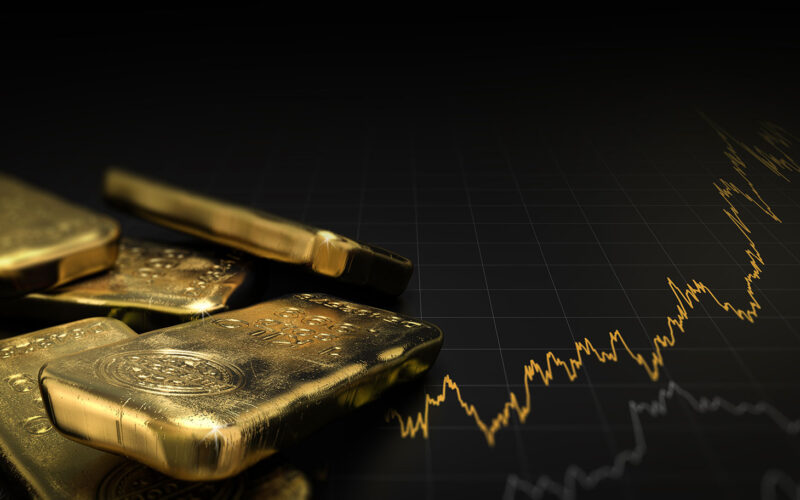In today’s issue:
- The gold price can’t catch its breath
- Investing is a game of alternatives
- Use the Dow/gold ratio as your guide
Things are getting awkward for us gold investors. Gold is in the news as much as bitcoin. Is it a sign of a bubble? Time to sell out?
That’s what an old friend recently asked me by email. Here’s my response, with some emphasis added in bold:
Gold isn’t in a bubble. It is nowhere near its all-time highs, once you adjust for inflation.
Given the state of the world, it’s clear gold should be much higher. Debt levels, inflation, government deficits and geopolitics all argue gold should be at all-time highs. That leaves huge gains on the table.
The question in the short term is whether the big gold buyers – central banks – will continue to diversify out of the US dollar and into gold.
But here’s what’s important to investors: the relationship between gold and stocks. That’s because investing is a game of alternatives. You have to choose the best alternative. Or least bad, anyway.
For the moment, gold is better than stocks, if your time horizon is more than 5 years. To understand why, you need to know about something called the stocks to gold ratio.
Just as you might decide which fruit to buy based on their relative prices, so too investments. When apples are cheap relative to mangos, you make the switch. So you should for your portfolio too.
Gold is an inanimate object that has held its purchasing power for millennia. Romans bought their outfit for one ounce of gold. Italians buy a designer suit for the same today. The value of gold hasn’t changed.
Stock market indices like the Dow Jones Industrial Average oscillate up and down relative to this stable gold price. This means you can establish whether stocks are cheap or expensive relative to gold by comparing them to the gold price. We call this the Dow/gold ratio.
Let me interrupt with a more complete explanation…
What’s the logic behind the Dow/gold ratio?
The value of gold has remained remarkably stable in the long run. Not in terms of money. Currencies come and go like board games go out of fashion. Gold’s purchasing power in terms of what you might want to buy remains steady.
House prices, horses, a square meal, Italian fashion and countless other items for which we have data going back millennia cost about the same amount of gold today as they did way back when.
In the short term, however, there is a lot of fluctuation. So gold is either cheap or expensive in terms of what you want to buy. Or consumer prices are high or low relative to gold – the same thing expressed in a different way.
When consumer prices are high relative to gold, it’s a sign gold is undervalued. You should own it in anticipation of gold rising in value relative to consumer prices.
If your gold can buy you suspiciously much, then it’s expensive and best avoided.
You can apply the same logic to stocks. Sometimes they are expensive relative to gold and sometimes cheap.
The implicit assumption is that the two will oscillate. They won’t break out into a trend above or below extreme levels.
Back to my email, which discusses the Dow Jones Industrial Average stock market index relative to gold:
When you can buy the Dow for 2.5 ounces of gold, you should sell your gold and buy stocks. When the Dow would cost you 18 ounces of gold to buy, it’s too expensive. You’re better off in gold, awaiting a buying opportunity.
Right now, the ratio is around 16. Stocks remain overvalued relative to gold. Especially American stocks in the Dow. They are at levels, relative to gold, seen before enormous decade-long gold bull markets in the 70s and 2000s.
That is not to say stocks can’t outpace gold for some time. Nor that gold will go up or down. But if you agree investing is a game of choosing the best alternative, then gold is better than stocks.
What we don’t know is why. Does it signal a period of inflation that undermines stocks, like in 2022? Or a bear market in stocks? Or a bull market in gold?
We’ll find out the hard way…
To sum up, investors asking whether gold is in a bubble may be missing the point. Everything is in a bubble in the age of central bank intervention.
The question is what is in less of a bubble. And measures like the Dow/gold ratio are a much better guide than the usual ones like price-to-earnings (P/E) ratios. That’s because they are relative between the different options investors have to invest in.
The gold price recently took off at such a pace that even my mentor Dan Denning began to predict a short-term pull back. He’s the one who introduced me to the Dow/gold ratio too. And he’s been using it to recommend gold over stocks.
Over at Fortune & Freedom’s publishing company Southbank Investment Research, we’re preparing a Gold Summit that’ll feature Dan and I’ll ask him about this. Just don’t tell anyone about the summit, yet.
For now, the man Dan Denning hired shortly after me is out with a far more radical prediction that could prove manyfold more profitable than gold ever will. Find out what it is, here.
Until next time,

Nick Hubble
Editor, Fortune & Freedom




